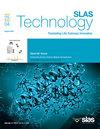An integrated deep learning framework using adaptive enhanced vision fusion and modified mobilenet architecture for precision classification of skin diseases with enhanced diagnostic performance
IF 3.7
4区 医学
Q3 BIOCHEMICAL RESEARCH METHODS
引用次数: 0
Abstract
Due to challenges such as illumination variability, noise, and visual distortions, machine learning (ML) and deep learning (DL) approaches for skin disease evaluation remain complex. Traditional methods often neglect these issues, leading to skewed predictions and poor performance. This research leverages a diverse dataset and robust image processing techniques to enhance diagnostic accuracy under such demanding conditions. We propose Dermo-Transfer, a novel architecture that combines MobileNet with dense blocks and residual connections to improve skin disease severity classification by addressing problems such as vanishing gradients and overfitting. Our method incorporates multi-scale Retinex, gamma correction, and histogram equalization to enhance image quality and visibility. Furthermore, a quantum support vector machine (QSVM) classifier is employed to improve classification performance, providing confidence scores and effectively handling multi-class problems. The proposed approach significantly enhances diagnostic accuracy and outperforms previous models. Dermo-Transfer not only improves pattern recognition and classification accuracy but also robustly handles varying image quality and lighting conditions. Dermo-Transfer was trained on 77,314 images covering skin conditions such as molluscum, warts, eczema, psoriasis, lichen planus, seborrheic keratoses, atopic dermatitis, melanoma, basal cell carcinoma (BCC), melanocytic nevi (NV), benign keratosis, and other benign tumors. The Dermo-Transfer classification method achieved accuracies of 99 %, 98.5 %, 97.5 %, and 89 % across four datasets, demonstrating its effectiveness and potential utility for clinical diagnostics. Additionally, Dermo-Transfer outperformed SkinLesNet and MobileNet V2-LSTM in terms of classification accuracy. Experimental results also highlight how IoT devices and mobile applications can enhance the computational efficiency and practical deployment of the Dermo-Transfer model.
基于自适应增强视觉融合和改进MobileNet架构的集成深度学习框架用于皮肤病的精确分类,提高诊断性能。
由于光照可变性、噪声和视觉扭曲等挑战,用于皮肤病评估的机器学习(ML)和深度学习(DL)方法仍然很复杂。传统方法往往忽略了这些问题,导致预测偏差和表现不佳。本研究利用多样化的数据集和强大的图像处理技术来提高在这种苛刻条件下的诊断准确性。我们提出了Dermo-Transfer,这是一种将MobileNet与密集块和残余连接相结合的新架构,通过解决梯度消失和过拟合等问题来改善皮肤病严重程度分类。我们的方法结合了多尺度Retinex、伽玛校正和直方图均衡化来提高图像质量和可见性。此外,采用量子支持向量机(QSVM)分类器提高分类性能,提供置信度分数并有效处理多类问题。该方法显著提高了诊断的准确性,并优于以往的模型。Dermo-Transfer不仅提高了模式识别和分类精度,而且对不同的图像质量和光照条件也有很强的处理能力。Dermo-Transfer对77314张图像进行了训练,这些图像涵盖了软疣、疣、湿疹、牛皮癣、扁平苔藓、脂溢性角化病、特应性皮炎、黑色素瘤、基底细胞癌(BCC)、黑素细胞痣(NV)、良性角化病和其他良性肿瘤等皮肤病。Dermo-Transfer分类方法在四个数据集上的准确率分别为99%、98.5%、97.5%和89%,证明了其在临床诊断中的有效性和潜在效用。此外,在分类精度方面,Dermo-Transfer优于SkinLesNet和MobileNet V2-LSTM。实验结果还强调了物联网设备和移动应用如何提高Dermo-Transfer模型的计算效率和实际部署。
本文章由计算机程序翻译,如有差异,请以英文原文为准。
求助全文
约1分钟内获得全文
求助全文
来源期刊

SLAS Technology
Computer Science-Computer Science Applications
CiteScore
6.30
自引率
7.40%
发文量
47
审稿时长
106 days
期刊介绍:
SLAS Technology emphasizes scientific and technical advances that enable and improve life sciences research and development; drug-delivery; diagnostics; biomedical and molecular imaging; and personalized and precision medicine. This includes high-throughput and other laboratory automation technologies; micro/nanotechnologies; analytical, separation and quantitative techniques; synthetic chemistry and biology; informatics (data analysis, statistics, bio, genomic and chemoinformatics); and more.
 求助内容:
求助内容: 应助结果提醒方式:
应助结果提醒方式:


